August 2, 2014 at 10:42 pm
I began the day discussion air flow, air foils, and the phenomena of lift. Using some simulations from NASA we examined how air flowed over an air foil to create the lift which allows planes to fly.
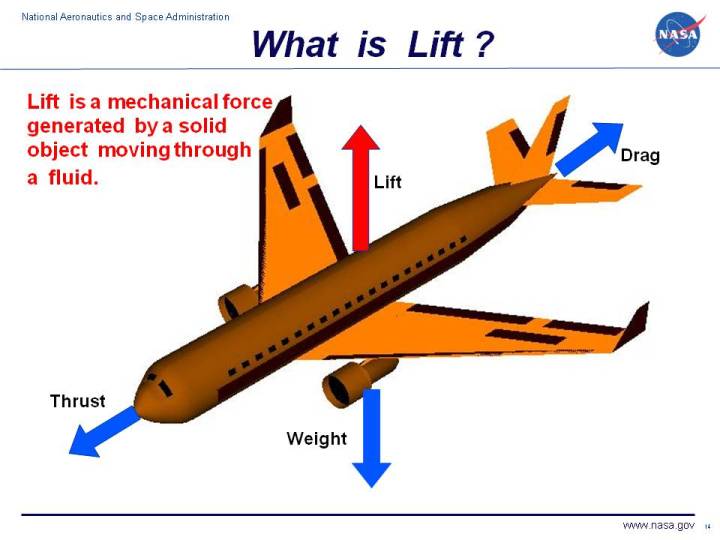
After my explanation using the computer simulation, we had a demonstration of the Wind Tunnel by Aaron Y. who is an undergraduate in the BU department of Mechanical Engineering. (That is not Aaron in this picture). The giant wind tunnel in the back of our teaching lab has a row a manometers which measure the air pressure at various points in the air foil.
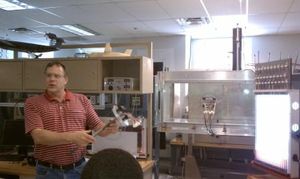

At 11AM Professor Grace returned to demonstrate the Smoke Tunnel. The Smoke Tunnel allows smoke to flow over an air foil so we can visualize the flow of air over an wing.

At 2PM we received a tour of the BU Satellite program from Professor Fritz. In BUSAT BU undergraduate students are building a real satellite which they hope will launch into space.
For projects today the main goal was to finish up our airplanes. In the afternoon we switched gears and started working on Rockets. Most of the students began working on their Estes Rockets. I like to order my rockets from HobbyLinc. You can buy most rockets for $10-20. The engines cost a few extra dollars, but the rockets are reusable, as long as you don’t lose them in the trees, river, roofs of houses…. Most of the students built Alpha rockets, although some of the kids built either the Baby Bertha or the Voyager or Eagle.
By Gary Garber
|
Posted in Physics
|
July 29, 2014 at 11:21 am
As we were building our airplanes today our mood music was actually listening the Boston Logan Control Tower. You can listen to ATC streaming live here.
In the morning, many of our students were busy finishing their Cadet Balsa planes. Others started building some more advanced White Wing Biplanes.
We also visited the Boston University Smart Lighting Center where the students learned about new LED lighting methods.
In the afternoon students continued to work on their airplanes.
In the afternoon, Joe Estano showed us a working jet engine. This small jet engine only exerts about 25 lbs. of force but was LOUD!
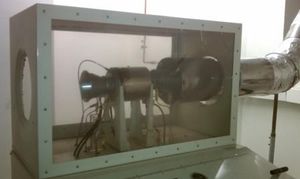
Then, our mentor David Millner gave us a lesson on how to fly a plane. He explained the instrument panel and gave us a lesson on how to play Flight Simulater.
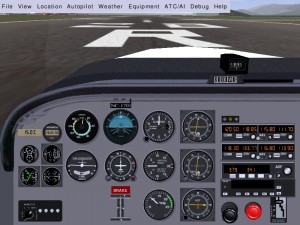
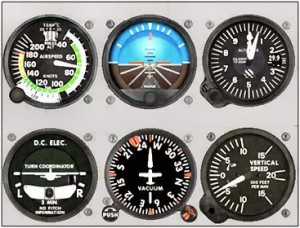
He showed how the instrument panel on a Cessna 172 works. We explored the function of the following instrument in the below diagram (going clockwise): Airspeed indicator, the attitude indicator, the altimeter, the turn & slip coordinator, the Heading indicator, and the Vertical Speed indicator. He demonstrated how these instruments work on Flight Simulator on the projector. You can by a home copy of
Microsoft Flight Simulator which we have been using in class for less than $20. Joysticks can be bought for $20 but
Rudder Pedals are more expensive at about $100, although they are not necessary.
We finished the day with an explanation of how Jet Engines work by Professor Sheryl Grace. We got into the mathematics of jet engines and did some calculations on the efficiency of jet engines.
By Gary Garber
|
Posted in Physics
|
July 28, 2014 at 11:22 am
Today we started out building White Wing airplanes. White Wings are specially designed paper airplanes, usually with a balsa wood fuselage. They have been engineered for amazing flight and when launched with a rubber band can stay aloft for over a minute! We built the White Wing Skycub which you can order online. The students were encouraged to alter their Skycubs by bending the elevators or ailerons to alter the aerodynamics of the airplane. Could they make it roll clockwise or counterclockwise, pitch up or down, yaw left or right?

We then went on to build balsa wood rubber band propeller airplanes. We used the Sky Streaks by Guillow. Guillow is actually a local company based in Wakefield, MA. They make lots of custom designed balsa planes for advertising your company. They have been around for almost 100 years!
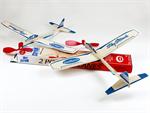
In the late morning we went on a tour of the BU Robotics Helicopter lab of Professor Mac Schwagger
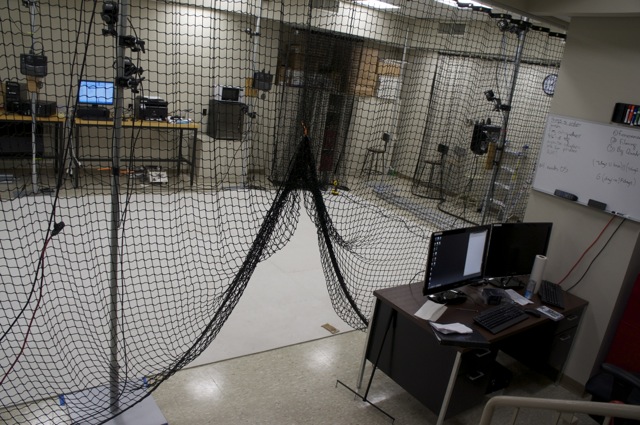
This is an interesting lab where they are researching autonomous quad-copter flight. You can buy a quad-copter in the mall which is controlled by joysticks. The new challenge is to have a quad-copter than can fly with nobody at the joysticks. Amazon wants to have autonomous drones which will deliver packages to your door!
In class I presented a brief lecture on aerodynamics. For this, I used a few NASA simulations. These simulations are a great way to play around and think about why airplanes work!
In the afternoon we began working on our advanced Guillow airplanes. 10 of the students chose to build the Cadet airplane, an advanced airplane which will take a few days to build. 5 of the students chose to design their own planes from the Guillow Design Studio. The designers tested their airplanes outside to see whose could stay aloft the longest period of time. They are now busy improving their design.
I also gave showed them vacation videos from my midlife crisis in zero gravity at NASA at the Houston Space Center.
By Gary Garber
|
Posted in Physics
|
April 6, 2014 at 10:43 pm
I spent the past several days at the National Science Teachers Convention at the Boston Convention Center. Thursday started out with a talk by some lady from Texas Instruments.
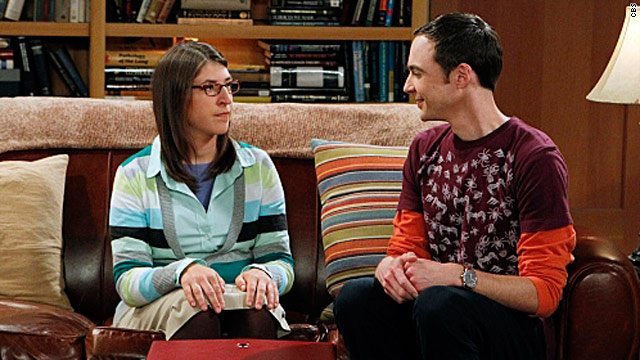
Lady from Texas Instrument who spoke at NSTA
I couldn't figure out why she was so popular, but the next guy I am a big fan of since I started teaching! Bill Nye the Science Guy!
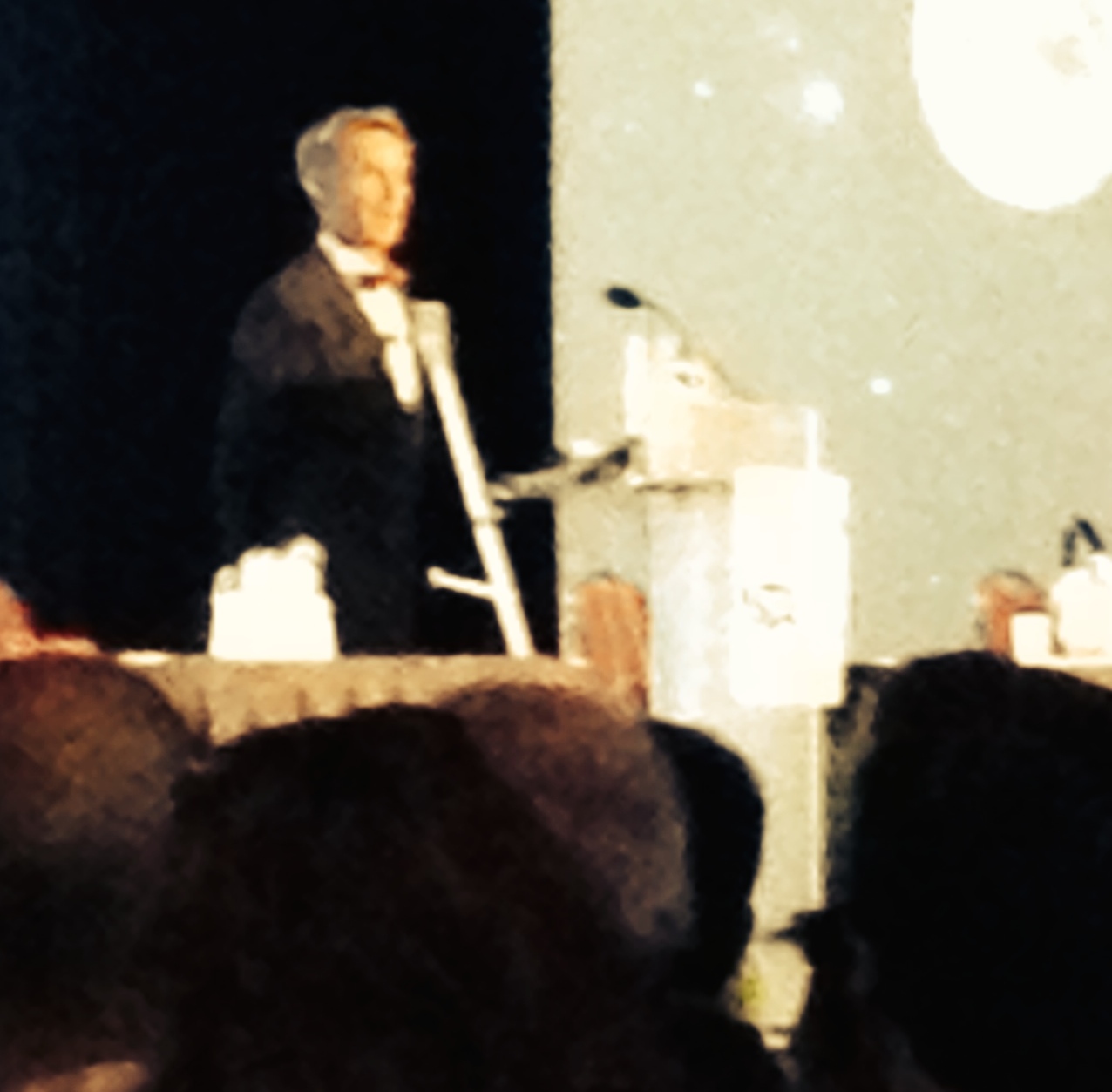
Bill Nye the Science Guy
He looked a bit older than I remember him when I started teaching. He talked about Dancing with the Stars and his debate with Kevin Ham. Most of his talk centered on how to avoid getting hit by an asteroid and the end of humanity as we know it. An interesting quote he had:
Article 1, Section 8, Clause 8
To promote the Progress of Science and useful Arts, by securing for limited Times to Authors and Inventors the exclusive Right to their respective Writings and Discoveries;
On Friday I received my big award! Many Thanks to David and Christine Vernier for generously sponsoring the technology award.
- David and Christine Vernier
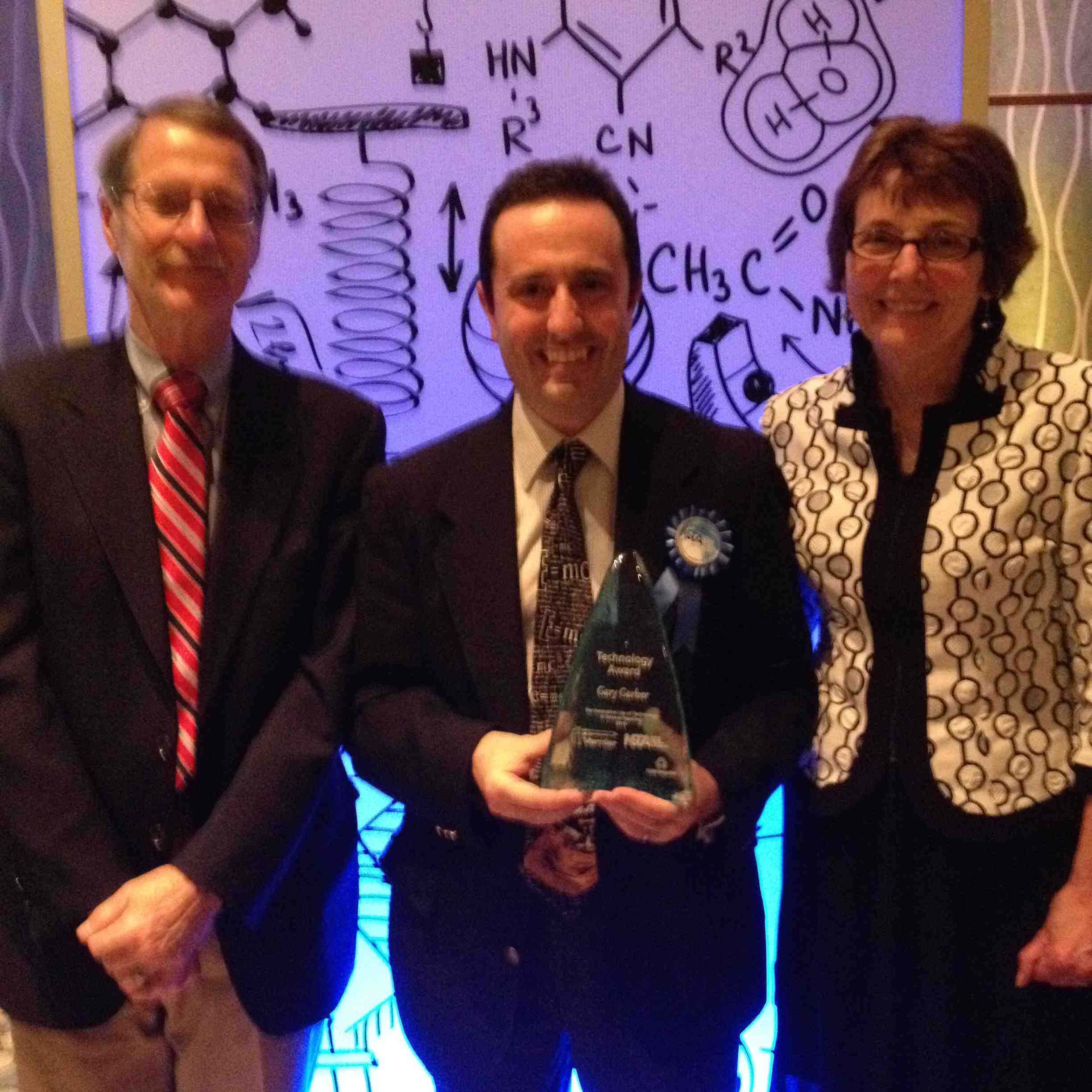
And many thanks to my best buddy Ira Flatow. He did a great job of announcing the awards.
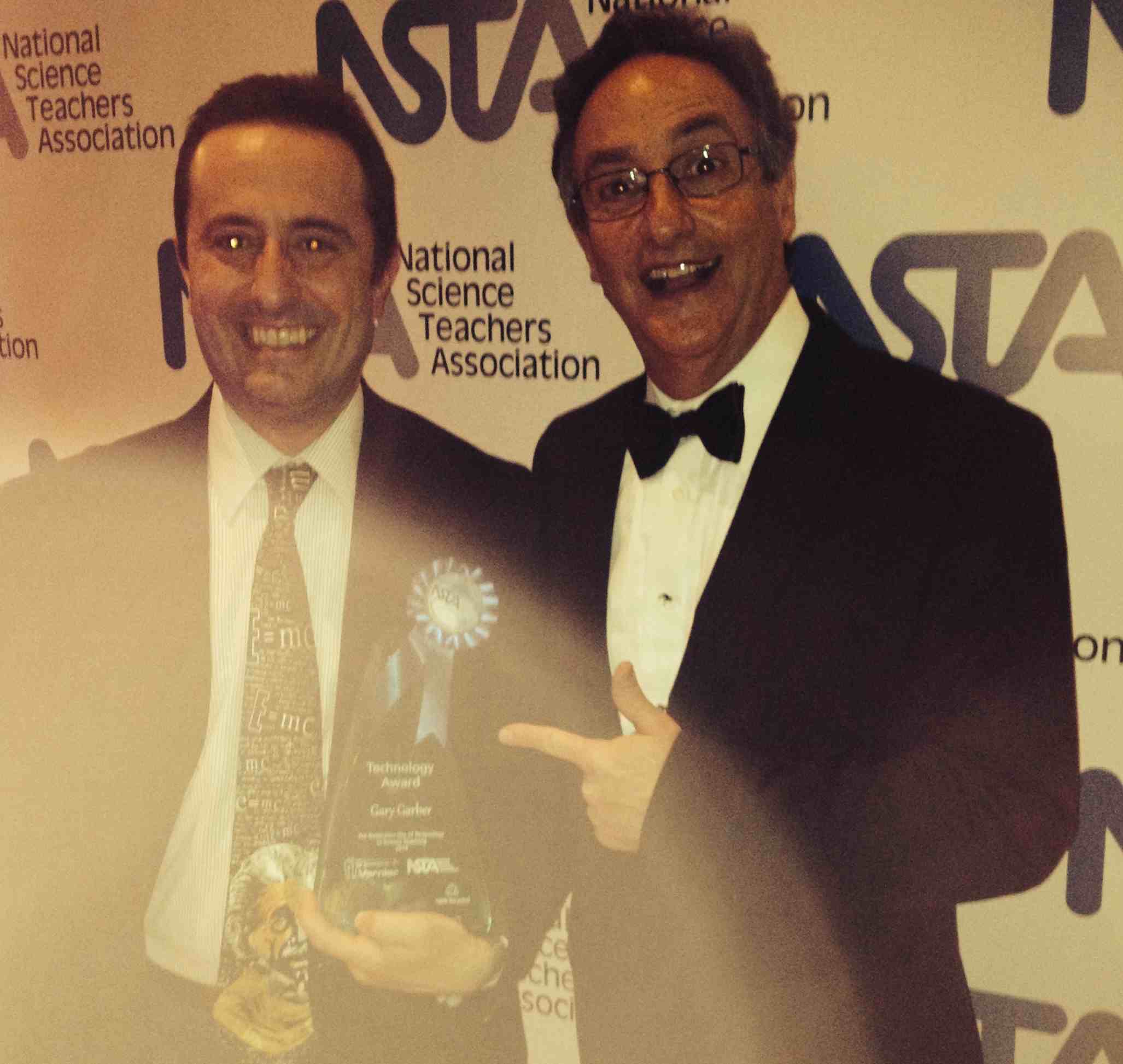
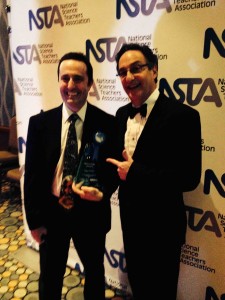
And Bill Bladder, the President of NSTA
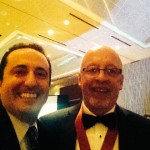
I also met Valerie Frizzle from Walkerville Elementary School at the awards ceremony. She was pretty upset because the Boston Parking Authority had just impounded her school bus.
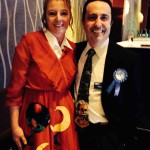
On Saturday I had a lot of fun in the exhibit hall. This strange lizard kept telling me he could save me a lot of money if I just gave him 15 minutes of my time. Alejandro and Leonardo liked him
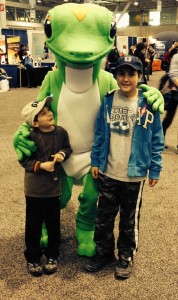
Then we met a giant bunny wabbit. We posed for a picture with him. But I could've sworn I saw a putty tat.
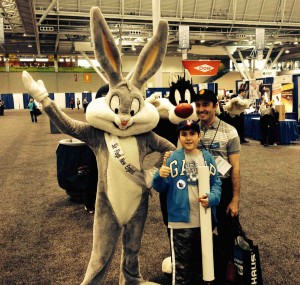 Dow chemical had a very cool robot.
Dow chemical had a very cool robot.
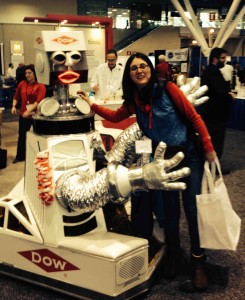 And then next to the LEGO and PITSCO booths we saw a Cyberman and K9.
And then next to the LEGO and PITSCO booths we saw a Cyberman and K9.
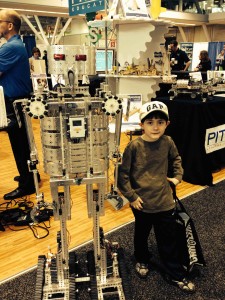
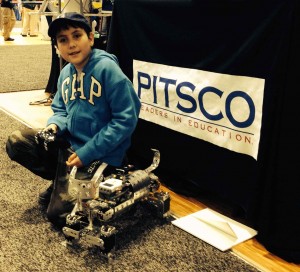
By Gary Garber
|
Posted in Physics
|
March 7, 2014 at 8:09 pm
This time I won the Vernier Engineering Contest! Yes, the same company, but a different award, and for something completely different! Last month I won the NSTA Vernier Technology Award. For this contest I had to create a video showing how to use Vernier probes in an engineering class. You can view my winning entry here.
This is a video from my engineering class I taught last semester at BUA. Many thanks to Liam C. for shooting a lot of the video of the engine testing. 50 points for Gryffindor House!!!
I should also thank Mark Greenman who gave me the idea for this rocket engine test stand almost 20 years ago. I attended an AAPT Regional in Long Island back in 1995.
By Gary Garber
|
Posted in Physics
|
January 28, 2014 at 10:18 pm
I received the following note today!
Congratulations! You have been selected by the NSTA (National Science Teachers Association) Awards and Recognitions Committee as a recipient for the 2014 Vernier Technology Award. They reviewed many applications and yours was chosen as it showcased your exemplary science teaching skills.
The Vernier Technology Awards will recognize and reward the innovative use of data-collection technology using a computer, graphing calculator, or other handheld in the science classroom. A total of seven $5,500 awards will be presented:
One award at the Elementary Level (Grades K-5)
Two awards at the Middle School Level (Grades 6-8)
Three awards at the High School Level (Grades 9-12)
One award at the College Level
So this is pretty exciting. NSTA is in Boston this year, so that will make traveling to the event a bit easier!
Here is the abstract for the lengthy application:
As a teacher I continue to learn and always display my passion for learning on center stage. Although no longer a “student” in the traditional sense, I am engaged in research in science and engineering. I am also involved in educational research. As teachers we need to listen to what students are saying. We need to try to understand what they are thinking, and to track the evolution of their thought processes. Every student learns differently, and by engaging in collaborative joint-sense making, we can make the learning experience a passionate experience for every child. I employ an active learning environment where students collaborate to explore ideas, design solutions to problems, and share results. Through my work at the Center for Engineering and Education Outreach at Tufts University, I am part of a team developing a software platform, called InterLACE, to aid students in collaborative inquiry based learning. Students share their ideas through this cloud-based platform and then engage in class discussions. My role as teacher is to moderate and steer learning
For my activity, students develop a model for the pendulum, a traditional high school physics experiment. My activity is different because of the required use of collaboration and use of a wide variety of Vernier sensors, including photogates, Motion Sensors, accelerometers and image analysis. Students also analyze data I gathered with a Vernier Wireless Dynamics System Sensor that I flew in an experiment on a NASA Reduced Gravity Flight.
Please see http://blogs.bu.edu/ggarber/2011/06/30/wednesday-in-houston/ to learn more about this activity
By Gary Garber
|
Posted in Physics
|
January 27, 2014 at 9:34 pm
Recently in physics class we just finished out unit on electrostatic.
Many thanks to Eric for providing this nice vide
After our introduction to sparks we played with the Van DeGraf Generator, which builds up a huge amount of charge, and makes you into an electroscope as we can see in these photos!




By Gary Garber
|
Posted in Physics
|
January 27, 2014 at 9:30 pm
I had to post this picture. One of the youngest people to buy my book sent me a picture of herself with the LEGO Mindstorm robot she made.
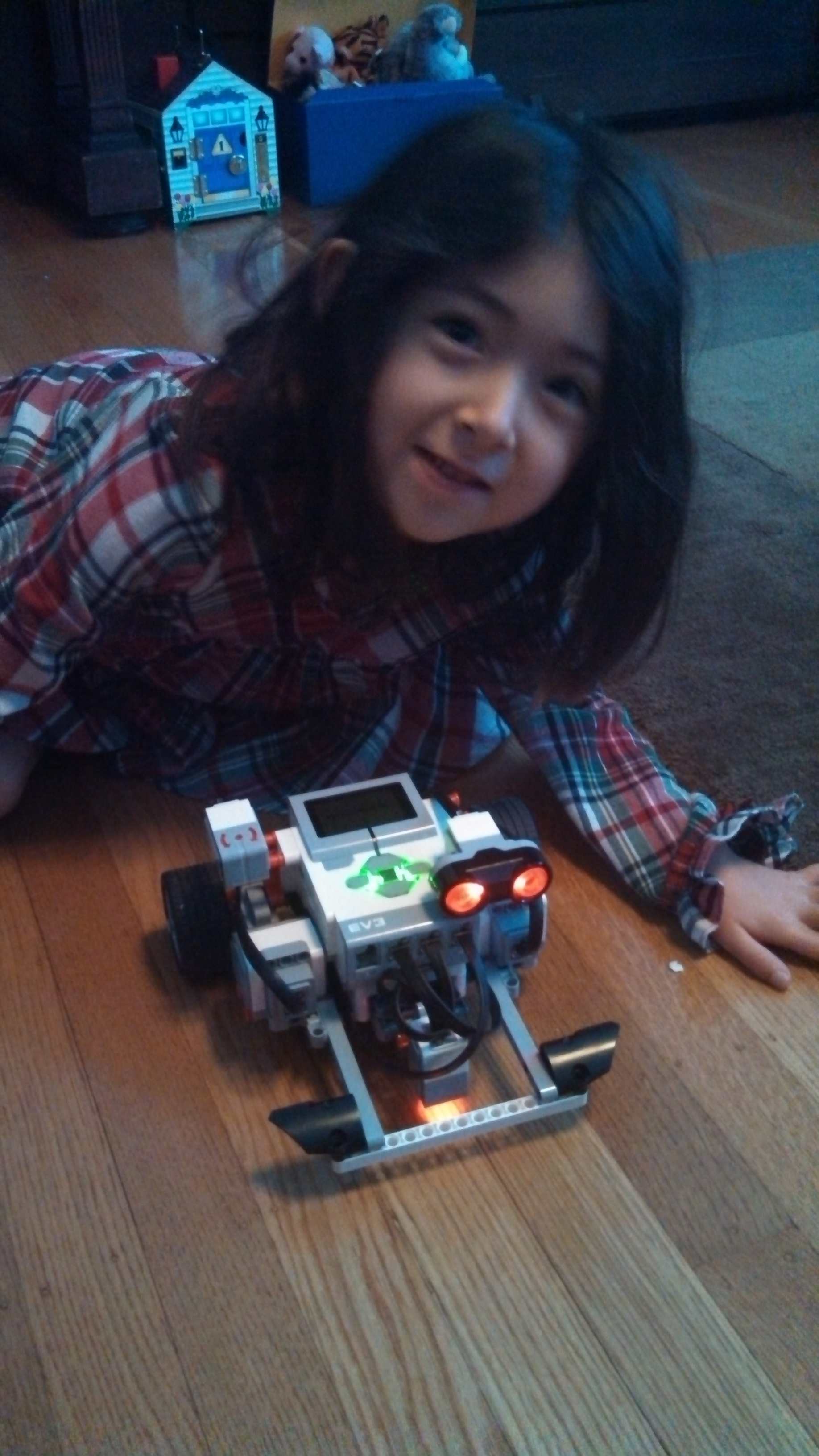
By Gary Garber
|
Posted in Physics
|
January 26, 2014 at 8:55 pm
When working at Tufts I was able to start playing around with 3D Printers. 3D Printing allows us as individuals to create physical objects that we can imagine!
Boston University just opened a giant facility which we might call a "Makerspace." But that is an understatement. EPIC is the new manufacturing training center for Boston University. There are rows of 3D Printers, Laser Cutters, Milling Machines, and Lathes.

New EPIC Engineering Product Innovation Center at Boston University
On a personal level, my wife just moved her art studio up from the basement and into our dining room. Maybe that is a hint I need to move the trains, robots, and tools out of the way. She is following her passion and creating wonderful artwork that she is trying to sell on Etsy. You can view her stuff online here: Www.etsy.com/shop/Horizontecreativo
The wonderful thing about the digital age is that it is allowing up to be "Makers" and "Creators" as opposed to all of us having the same objects we buy at Pier One Imports but are all imported from a factory in the far East. I seem to remember this was the theme of an episode of Friends or Seinfeld or some 90's sitcom.
Here are some of the things that my wife has been busy making recently.
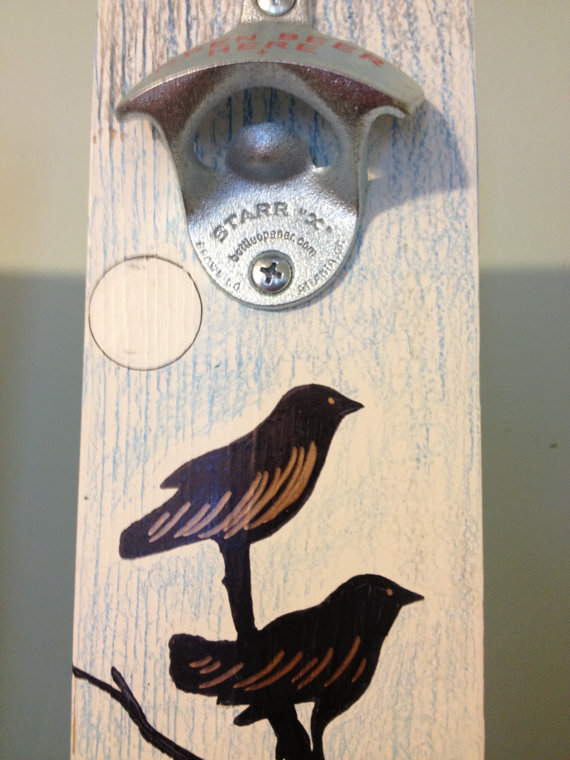
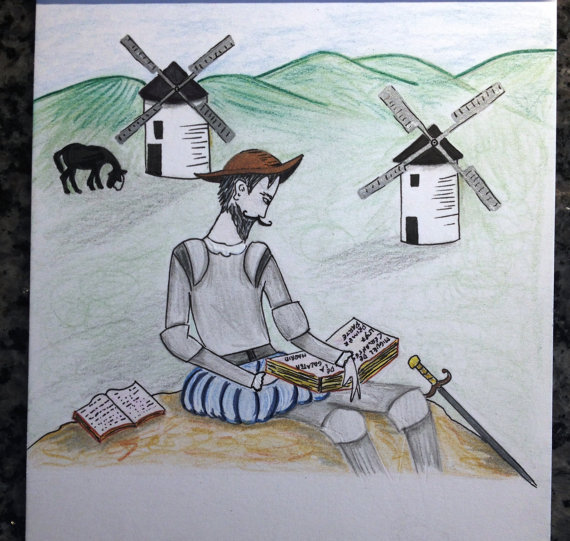
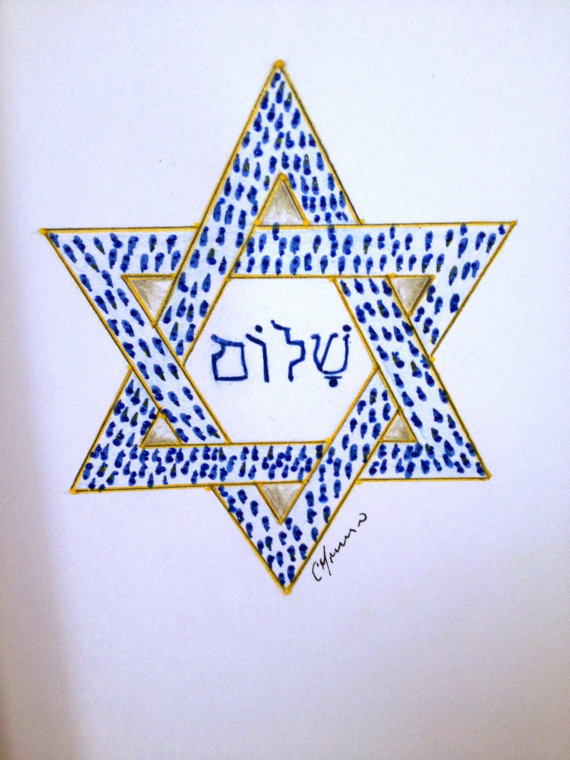
By Gary Garber
|
Posted in Physics
|
January 22, 2014 at 10:21 pm
As the Olympics are starting, a friend pointed out this great web-site.
http://www.nsf.gov/news/special_reports/winterolympics/
Speaking of the Olympics, I just spent some time tonight organizing the New England Physics Olympiad. So if your school is interested, we will soon have information on a date and a location for this annual event. This year we are planning to integrate it with the AAPT Physics Bowl.
Next week, we will be proctoring tests for students trying out for the US Physics Team. Next Wednesday, Jan 29th, after school. If you want to try out, take some practice tests, and you will need to sign up in Web Assign.
By Gary Garber
|
Posted in Physics
|































